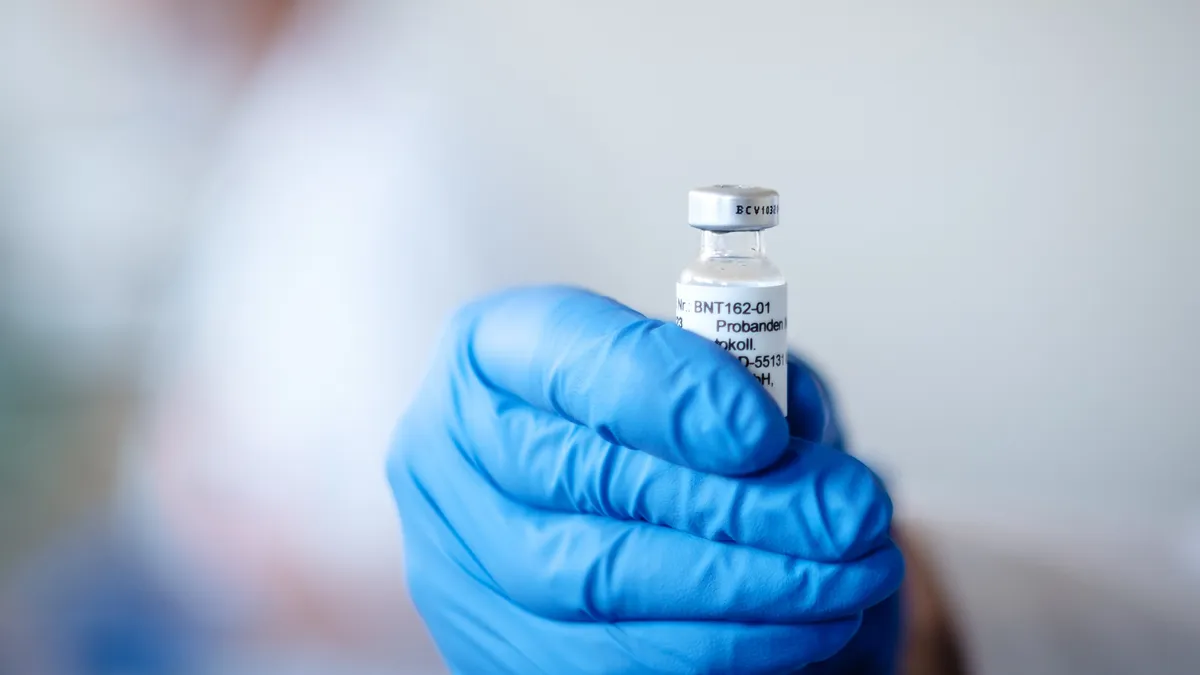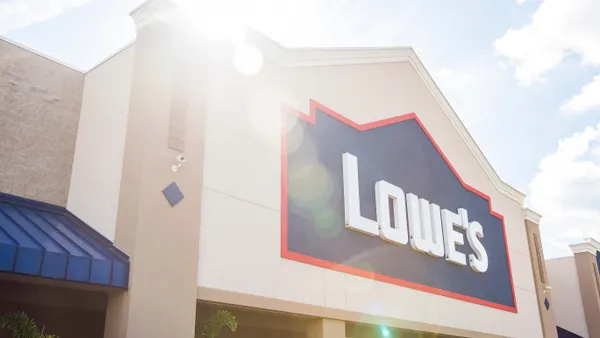Dive Brief:
- Demand in the U.S. for dry ice is up 1,138% YoY and rose 695% from Q3 to Q4, according to data from Thomas. The upward trend is expected to continue as vaccine manufacturers race to develop and distribute vaccines worldwide.
- Sourcing for ultra-low temperature freezers was also up for the year and Q4 at 835% and 571% respectively. Demand for syringes skyrocketed in 2020, with 187% increase YoY and a month-over-month uptick of 403% from November to December.
- Overall, Thomas anticipates an increase of 30% to 33% in demand for COVID-19 vaccine-related supplies and equipment in Q1 2021, based on trends from Q4.
Dive Insight:
Administering COVID-19 vaccines to Americans and distributing personal protective equipment places pressure on supply chains. To meet the call, companies are figuring out where, how and how quickly they can procure materials.
"The manufacturing sector continues to be a resilient force as it adapts to overcome rising obstacles – from diversifying its supply chain to combating the skills gap," said Thomas President and CEO Tony Uphoff.
But implementing and sustaining that level of diversified sourcing is easier said than done. A more diversified supplier base can mean huge upgrades on the part of suppliers in manufacturing processes, distribution and general administrative procedures to comply with the requirements for PPE and vaccine-related products.
Finding raw materials and specialized ingredients for critical items can be a daunting task in the current, constrained market. Steel, silicone and borosilicate glass are just a few of the materials needed to produce medical equipment used for administering vaccines.
If the U.S. is going to vaccinate enough people to engender herd immunity (60% to 70% of the population innoculated), more vials and syringes must be secured. Once available, those vials will need to be transported in ULT freezers, packed in dry ice.
Thomas noticed a spike in dry ice sourcing in mid-June, and throughout the fall, demand sustained and precipitously increased last quarter. ULT freezer demand followed a similar trajectory with sourcing surges in October, ending the year in a 852% YoY increase.
While the need for masks and gowns, and later nitrile gloves, left industries "flat-footed," supply levels seemed to normalize somewhat after the first six months of the pandemic, said Tom Pelliccio, executive vice president of Pilot Freight Services, a freight forwarder. Now, gloves are the top PPE commodity and will be in high demand throughout 2021 he thinks, based on the contractual production agreements he's seeing.
"Gloves are the number one product today. There still seems to be a real shortage on gloves, and from talking to manufacturers ... the price is continuing to climb because of the raw material costs," Pelliccio said.
PPE sourcing for items like face masks and gowns have started to be reshored to the U.S. or nearsourced from Mexico and Canada, Pelliccio said. But he said the raw material costs of gloves will most likely keep the bulk of production in Malaysia, Vietnam, Thailand and mainland China.
Pelliccio suggests that buyers of gloves and other PPE and vaccine-related supplies work with providers that have an understanding and relationship with local suppliers and know the current equipment-shortage challenges around shipping.
"You can't have any missteps with the equipment shortages that we have today. It's extremely important that the supplier, forwarder and customer are in lock step," Pelliccio said.
Manufacturers are having to regroup to meet the demand for PPE and vaccination requirements. Corning had to expand its capacity to over four times its existing capabilities to produce glass vials, with the help of government funds. The Biomedical Advanced Research and Development Authority provided grants to Corning and SiO2, a materials science company based in Auburn, Alabama, to increase production of vials amid a global glass shortage.
The Biden administration issued an executive order last month to use the Defense Production Act to "fill supply shortfalls," but the mandate can only expand manufacturing capacity at private companies based in the U.S. This week the administration awarded $231.8 million to expand U.S. production of a rapid at-home test for COVID-19.
This story was first published in our weekly newsletter, Supply Chain Dive: Procurement. Sign up here.















